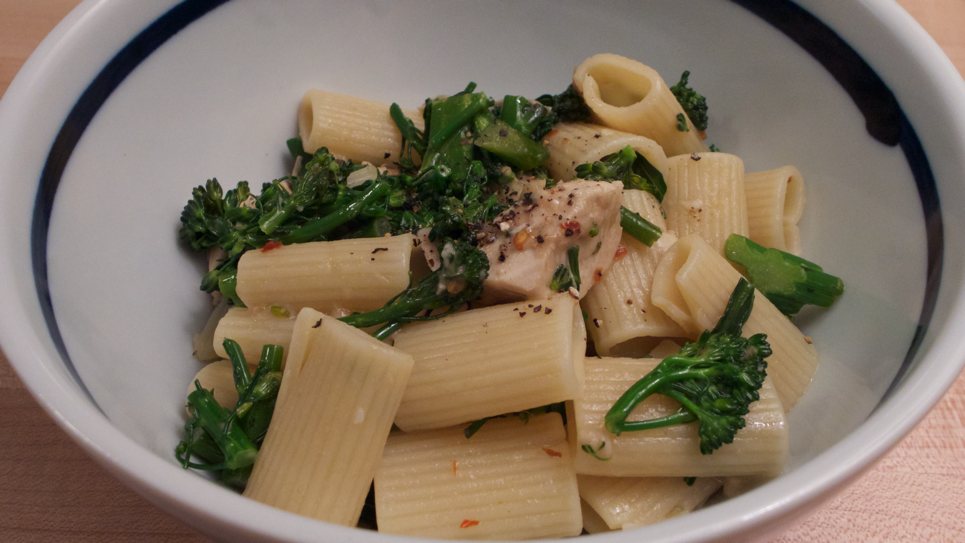Broccolini and broccoli rabe are not the same.
Last winter, during Boston’s record-breaking snow storms, schools shut down, trains and busses stopped running, and Nathan and I shoveled snow for fun and exercise. Having spent the first three years of my life in Hong Kong, the next twenty four in and around Los Angeles, and the last five in Boston, I remain unconvinced that I am equipped to deal with so much snow and cold.
Yet, we still had to eat! So, during the days that we avoided leaving the house because snow had blanketed the outside world, I made many variants of “from-the-pantry” pasta. The idea is simple and wonderful, and not at all my own invention: take a pasta shape that can hold onto a thin and oily sauce (I like bronze-cut rigatoni), choose a hearty green, and mix the two together with an anchovy/garlic/lemon juice/pepper/pecorino romano sauce. The only “fresh” ingredient that the recipe needs is a hearty green, and this can be anything from kale, which I consider on the milder side of flavors and textures for this recipe, to broccolini (for a little more crunch) and broccoli rabe (for a more nutty/bitter flavor).
I only stumbled upon broccoli rabe as a green to use for this type of pasta by circumstance. The grocery store had sold out of broccolini. I had never cooked with broccoli rabe before, but I figured that it couldn’t be very different (yes, yes, because they both start with the sound “broccoli”). The first time that I tried to cook broccoli rabe, I treated it just like broccolini and learned that broccolini is more like broccoli than broccoli rabe. Although all three have crunchy stems (my favorite part of all three vegetables!), broccoli and broccolini have florets and will barely wilt (if at all) when cooked. They have a mild taste in both raw and cooked form. Broccoli rabe, however, can be quite bitter in its raw form. However, when cooked for long enough—and this is easy to gauge because broccoli rabe has leaves, not florets, that will wilt substantially under heat—the entire green acquires a nutty flavor that stands up well against salty anchovies, pungent garlic, tart lemon juice, spicy pepper flakes and black pepper corns, and savory pecorino romano cheese.
The pasta dish itself is easy to assemble: start a pan with olive oil, anchovies, and pepper flakes, add in lemon juice and garlic, add in a hearty green (and cook until wilted if broccoli rabe), toss in pasta and pecorino romano, and add pasta water as necessary to thin out the pasta and sauce. The anchovies and pepper flakes benefit from extra cooking time at the beginning because the anchovies need time to dissolve, and the flavor of pepper flakes increases after having some time to bloom in the heated oil. Adding the garlic shortly before the greens prevents the garlic from burning, and the pasta water helps keep the dish from becoming a gooey agglomeration of pasta. Overall, a delicious pasta template for cold Boston days filled with snow shoveling.
